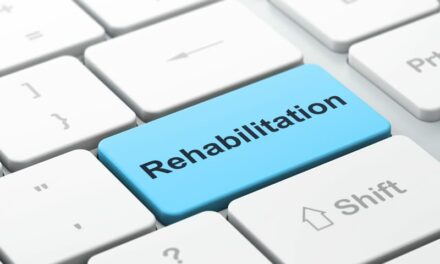Stroke is the third leading cause of death in the United States, according to the American Stroke Association, and the leading cause of serious long-term disability. It can result in temporary and/or permanent damage, limiting one’s movement, balance, and coordination. Now, more than ever, stroke survivors, through physical therapists, have access to more aggressive and advanced technologies designed to help restore them to the highest level of function possible. As experts in restoring and improving motion in people’s lives, physical therapists play an important role in recovery from stroke and the development and use of the latest treatment advancements.
"Studies have shown that earlier, aggressive interventions produce better outcomes in patients with stroke. Advanced technologies can be instrumental in attaining those outcomes," says Alison Lichy, PT, DPT, NCS, in a statement from the American Physical Therapy Association (APTA), Alexandria, Va. "More often now, you will see the physical therapist also working behind the scenes in research and development of these technologies, which benefits patients and adds a unique perspective on research. Who better to investigate and help develop the technologies that help patients regain mobility than the experts who implement the treatment programs for the patient in the clinic?"
Many emerging technologies address common stroke-induced mobility deficiencies such as paralysis and weakness. To give an idea as to what is on the horizon, here are just some of the new innovations** physical therapists are using:
ZeroG
This is a unique and dynamic over ground gait and balance training system that combines new technology with established treatment techniques (body weight supported gait training). Developed with the input and feedback of physical therapists, it is designed to aggressively treat patients early in their rehabilitation process. The therapist can control the walking speed of the patient, the amount of body weight support provided, and how much the patient will be allowed to fall before the system catches them. It also allows the patient to perform a variety of activities under partial weight support, such as walking with or without an assistive device, stepping over obstacles, performing high level balance activities, and practicing sit to stand. A pilot study is being conducted by physical therapists to determine if training with the ZeroG will benefit people with significant lower limb impairments to begin training earlier after their injuries and focus on re-establishing symmetrical gait patterns rather than adopting compensatory strategies (click here to see how it works).
Ness L300
This technology was designed to improve walking in people that have foot drop, a side effect of stroke. Strapped around a patient’s lower leg, it helps retrain the feet and legs to relearn walking patterns by delivering electrical pulses to the nerve in the patient’s leg, which controls the movement of the ankle and foot muscles. A sensor in the shoe detects when the foot is in the air or on the ground and sends information to a control unit telling it when to raise and lower the foot during walking.
MIT Manus
This device for post stroke upper extremity (UE) rehabilitation allows movements in two dimensions, and measures and provides forces at the endpoint (a handle grasped by the hand). A monitor in front of the patient displays their current hand position and representation of a target position toward which they must move their hand. Forces can be applied to the hand to directly resist movement or to assist the movement. Forces can also be provided to push the hand off course to require an active readjustment of the arm to reach the target.
Tailwind
This portable table top device was developed and invented by physical therapists to improve arm function and range of motion in stroke patients. Suitable for home use, the Tailwind consists of two moveable handles on independent resistance-free tracks. The patient moves the handles along each track at a certain starting mark, in response to auditory cues. The combination of the repetitive arm movement with sound and visual cues is thought to trigger the part of the brain that controls mobility in the arm.
Because many of these technologies are so new, evidence citing their effectiveness is still a focus of research. However, physical therapist Kathy Brady, PT, of National Rehabilitation Hospital, Washington, has witnessed significant recoveries in stroke by using some of these technologies. "Technologies, such as the ZeroG, provide the ability to practice tasks with greater repetition, which can result in faster recovery and this allows us to be more aggressive in our treatment of the patient," she said in a statement. "Research has shown that early, high intensity interventions are strongly correlated with gains in walking ability and function."
** While some products mentioned are endorsed by APTA, inclusions and/or mentions of these products is neither a guarantee of the products nor are they necessarily an endorsement of the company/product. APTA assumes no responsibility for any product or corporation, nor for any damages caused by any product or company. You are strongly encouraged to conduct your own due diligence in researching a product and the company before deciding if that product is appropriate for practice or use.
[Source: APTA]




